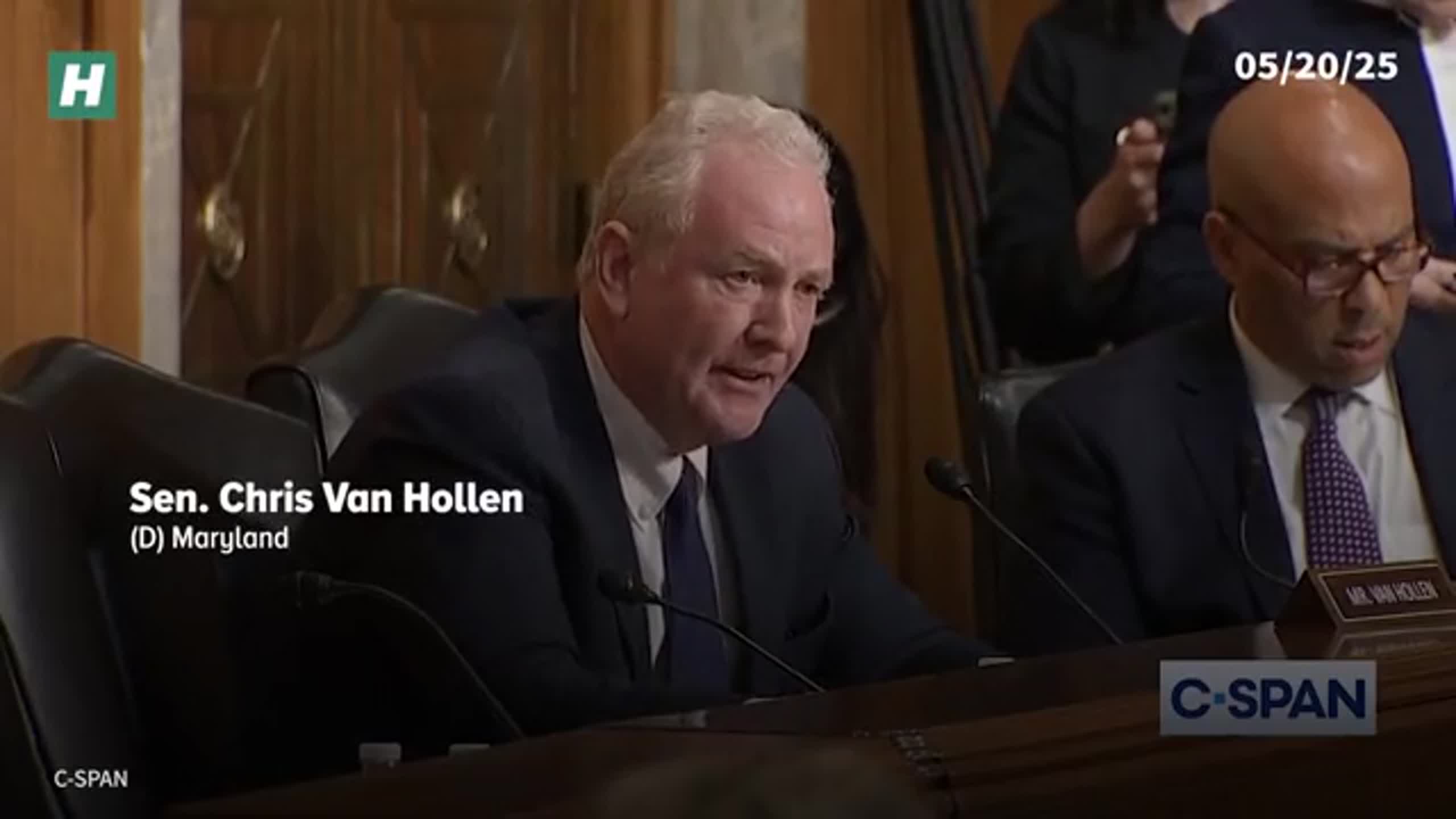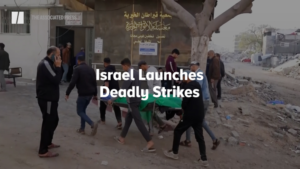Israel Is Finally Letting Some Aid Into Gaza. Here’s Why It’s Not Close To Enough.
Given the Israeli military’s increased bombardment, experts warn against seeing the trickle of aid now coming in after a three-month blockade as a mercy.
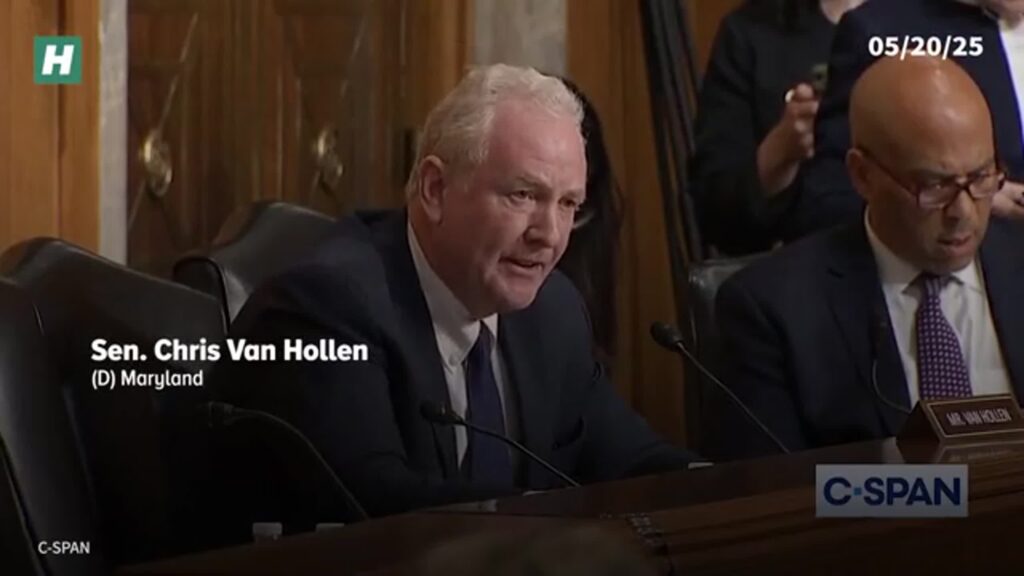
Israel began allowing a small number of aid trucks into Gaza this week after nearly three months of blocking access to food and medicine for Palestinians — but with the Israeli military’s increased bombardment of the occupied territory, experts warn against seeing the trickle of humanitarian assistance as a mercy.
For the past 11 weeks, the Israeli military maintained a total blockade of all humanitarian assistance into Gaza, which has been rendered almost unlivable due to troops destroying infrastructure meant to provide food, clean water, shelter and adequate health care. Israeli forces continued to bomb Gaza during the blockade — killing hundreds, worsening an existing starvation crisis and preventing doctors from treating victims with the necessary medical supplies.
After facing intense international backlash and threats from some allies, Israel said it will allow a “minimal” amount of aid into Gaza. COGAT, the Israeli defense agency that oversees aid deliveries, said that a whopping five trucks entered Gaza on Monday, the first to enter the territory since March 2. Two of those trucks were filled with shrouds, according to Gaza-based journalist Motasem Dalloul.
COGAT said that it allowed 93 aid trucks to enter Gaza on Tuesday, filled with food, medical supplies and baby formula. But United Nations spokesperson Stéphane Dujarric refuted the claim, confirming that only a few dozen trucks entered the territory that day — none of which actually reached Palestinians, due to the Israeli military forcing aid workers to reload supplies onto another truck before they could bring them to distribution points.
For context, the U.N. said that 600 trucks entered Gaza each day during the ceasefire period earlier this year, a number that aid groups said at the time was still below what Palestinians needed to get back on their feet. Israel broke the ceasefire in March.
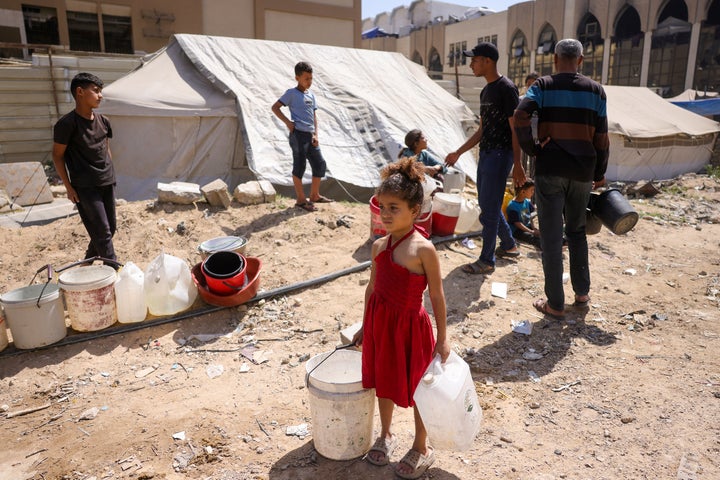
“This has been a man-made catastrophe that is the product of calculated policy that is decades in the making,” Yousef Munayyer, head of the Arab Center’s Palestine/Israel program, said on Tuesday. “I want to emphasize: This is not about a lack of food. This is about a lack of access to food, because the food is being denied by the military.”
At least 240,000 metric tons of food and medical supplies sit in warehouses outside Gaza, according to UNRWA USA executive director Mara Kronenfeld. The nonprofit helps support UNRWA, the U.N. agency responsible for helping Palestinian refugees.
“Meanwhile, there’s enough food just beyond the borders being held back by Israel that would feed one million people in Gaza for up to four months if the borders were open tomorrow,” Kronenfeld said Tuesday. “And we’re talking about the border being open … to the free flow of unrestricted aid.”
UNRWA is considered the only agency with a system large and organized enough to deliver and distribute enough humanitarian assistance to Palestinians. But because of Israel’s allegations that the group has ties to Hamas — as well as the resulting withdrawn funding from the U.S. — UNRWA has been unable to do its job to keep Palestinians fed, healthy and safe. (UNRWA has said it has not knowingly aided any armed group and accused Israel of campaigning to discredit it.)
“There are 14,000 babies that will die in the next 48 hours unless we can reach them,” U.N. humanitarian chief Tom Fletcher told the BBC on Tuesday.
Israel’s reasoning for the total blockade was that it would pressure Hamas to release the remaining hostages, an excuse that human rights experts describe as violating the international law against collective punishment. Since that blockade began, food security experts and doctors have said that Palestinians, specifically children, are either starving to death or are unable to heal from wounds due to malnutrition.
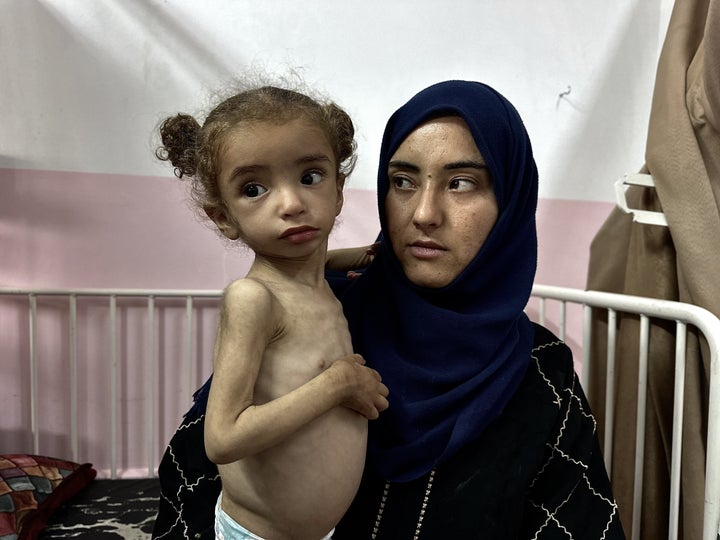
“Even if the borders are open today and the one million children in Gaza receive the food that they need, the damage to their bodies, the long-term damage, has been done. It’s done,” said Huwaida Arraf, co-founder of the International Solidarity Movement. “Israel has destroyed a generation of Palestinians, and that is deliberate.”
Israel launched a wider bombing campaign in Gaza over the weekend, in what Prime Minister Benjamin Netanyahu said Monday was an effort to “take control” of the entire territory, even after the hostages are returned. Netanyahu said he’s only allowing limited assistance until Israel and the U.S. launch their new military-run aid distribution system called the Gaza Humanitarian Foundation, which would essentially replace UNRWA.
“Frankly, it lacks any Palestinian involvement in its design or implementation. And it is neither independent or transparent, as it brands itself, as it would be dependent upon Israeli coordination,” Kronenfeld said. “And also, it should be noted, [the aid] would launch from four distribution sites — three of which are in southern Gaza, which conveniently aligns with Israel’s public stated goal of forcing the entire Palestinian population out of northern Gaza.”
Israel has said that the new system is meant to prevent Hamas from stealing aid, though UNRWA said it already had mechanisms in place for that in addition to directly providing aid to Palestinians. The U.N. and aid groups have rejected the idea, raising alarms about an aid distribution system run by the same country that has caused the need.
“This plan has been contrived precisely so that it can be used in the service of ethnic cleansing,” Munayyer said. “And the idea behind this plan is to effectively starve the population in Gaza, then introduce strategically located distribution points where food can be used as bait to pull the population out of certain places and drive them further into the south of the Gaza Strip, so that they can then be further ethnically cleansed out of it and forced out of the strip altogether.
“This is a very thinly veiled effort at ethnic cleansing dressed up as humanitarianism,” he continued, “and it is one of the more pernicious schemes that we’ve seen in recent memory.”

